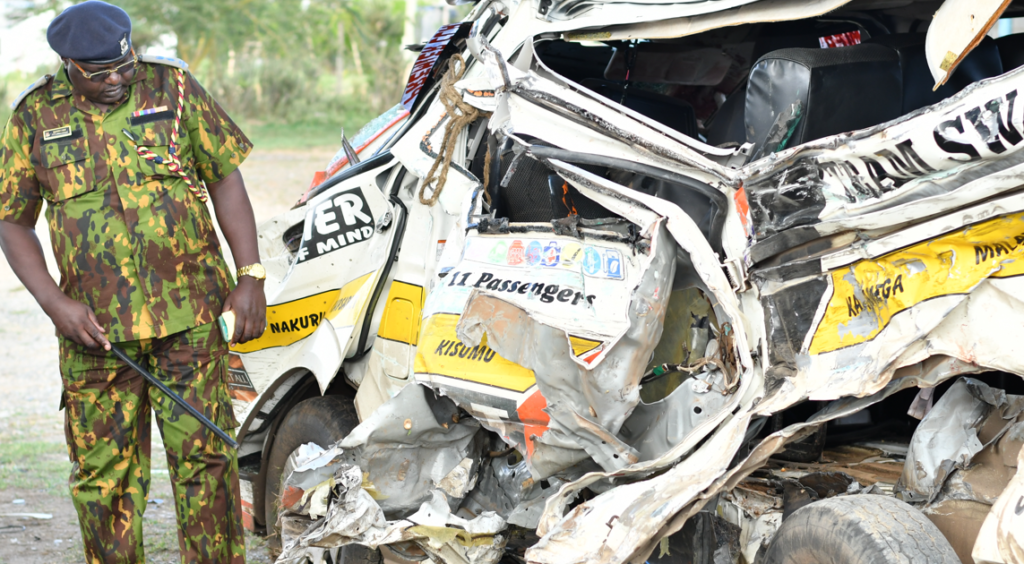Last week’s road accident on the Nairobi-Mombasa Highway, claiming 11 lives from Kenyatta University, resonated deeply with every parent, I included. In another unfathomable incident last week, I witnessed heavy night traffic caused by a drunken driver who halted his car in the middle of Mombasa Road, succumbing to sleep on the wheel near the Imara Daima diversion. In Kenya, road accidents and incidents are widespread, taking thousands of lives annually and leaving families in mourning while impacting the country’s progress.
The National Transport and Safety Authority (NTSA) reports a distressing surge in fatalities, with 563 lives lost in the first six weeks of 2024 alone, an increase from the previous year. The grim reality is that Kenya’s roads, arteries of commerce and connection, have become conduits of calamity. While NTSA has made strides in enhancing safety for public service vehicles, such as requiring two drivers for long-distance trips, a worrying trend has emerged in the school bus sector, where we are witnessing an increase in accidents involving children. This calls for deliberate action to address this specific area of concern.
What troubles me deeply is that these fatalities are preventable. Why then aren’t they prevented? What can we do to drastically reduce road fatalities? What can we learn from other regions in the world? Let’s explore these questions together so that we can collectively find solutions that can deliver much safer roads.
Pedestrians suffer the most in road accidents, leading to widespread grief among families and significant economic impacts due to lost productivity and healthcare costs. Addressing the three root causes of our accidents is essential for safer roads.
Firstly, the human element is pivotal. The Kenya Urban Roads Authority (KURA) has in the past revealed that over 57 percent of all accidents are because of basic human errors. If we tackle and prevent these errors, road accidents will reduce substantially. As such, we must accept that it is most essential to retest drivers’ competence and instill behavioral change through continuous education. Road responsibility and driving competence are a function of time and must never conclude just because one has finished driving school. Furthermore, commonsense road behavior must be amplified and reinforced. For instance, how do you sit to drive when you are fatigued or drunk?
Secondly, bad transport infrastructure has resulted in increased accidents. Potholes, poor signage, and inadequate lighting, along with narrow roads, create hazardous conditions in Kenya. It’s crucial for both national and county governments to urgently address these issues, ensuring all tarmacked roads are clearly marked for enhanced visibility and safety. I wish I could give a cold wake-up call to those road contractors and officials responsible for our dangerous roads, by plunging them into freezing water for 81 minutes or giving them a figurative ‘proper head-smash’ of realization!
Thirdly, the condition of vehicles is critical, necessitating stringent standards for inspection and regular checks to ensure safety. Faulty vehicles lead to road fatalities. That’s why we must support Interior Cabinet Secretary Kithure Kindiki’s recent announcement for the immediate commencement of a nationwide crackdown of unroadworthy vehicles to curb road accidents. However, such crackdowns must be the order of the day, not occasional occurrences. The tragic Londiani accident last year, where a truck lost control and caused 52 deaths, highlights the urgent need for stringent vehicle inspections to prevent such avoidable disasters on our roads.
Kenya can learn from global models like Sweden’s Vision Zero, New Zealand’s Safe System Approach, and the Netherlands’ Sustainable Safety Vision to reduce road fatalities. These strategies which I had the rare opportunity to study, focus on anticipating human error, promoting safe road use, and categorizing roads for targeted safety measures. If these countries can achieve significant results, so can we!
By promoting a culture of safety through sustained awareness campaigns and adopting a proactive, comprehensive approach informed by global best practices, Kenya can effectively reduce road accidents. Dereva, chunga maisha! Think green, act green!



